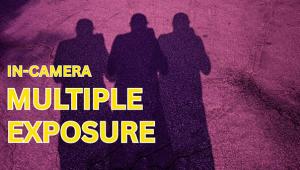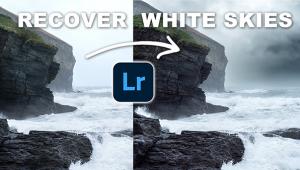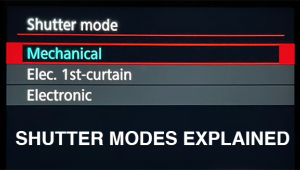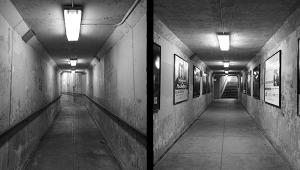A Practical Guide to Managing Depth of Field

Depth of Field has a lot in common with gravity. You don’t have to fully understand the physics behind it to make it work for you. Managing depth of field is a critical component of mastering photography. This article should get you well on your way.
What Is Depth of Field
What is depth of field (DOF) exactly? It’s the area in front of and behind the point of focus that also appears to be sharp.
For photos taken from the same distance and with the same lens we can accurately say that depth of field becomes larger as the diameter of the aperture decreases. In other words, a smaller f/stop (like f/16) generates greater DOF than a larger f/stop (like f/4).
Sometimes people confuse this with sharpness but the two are quite different. In fact, using a very small aperture can rob you of sharpness, as we’ll discuss later.
Wide angle lenses produce more DOF than telephoto lenses (assuming that film format or sensor size is the same). Some will argue that if you crop a wide angle image to match the field-of-view of a telephoto lens the DOF will commensurately diminish. Yeah, I get that. The point remains: put a wide angle lens on your camera and you’ll enjoy more depth of field, all else being equal.
Depth of field always extends 1/3 in front of and 2/3s behind the point of focus. No matter whether the DOF is deep or shallow, it always follows this formula. This fact becomes more important to understand when you do macro photography. It also helps us do some cool pre-focusing tricks using the hyperfocal distance.
Depth of field decreases as the distance between the subject (point of focus) and film plane decreases. You have very little DOF to work with when doing macro photography and are focused just a couple centimeters away, but you have extreme DOF when focused at a point near infinity. Some lenses have a Depth of Field scale printed on the barrel. It looks like a symmetrical set of hash marks that delineate the range of focus when aligned with the aperture that’s being used and the distance from the subject. Space is limited, so often the f/stops are color-coded.
Some lenses have a Depth of Field scale printed on the barrel. It looks like a symmetrical set of hash marks that delineate the range of focus when aligned with the aperture that’s being used and the distance from the subject. Space is limited, so often the f/stops are color-coded.
All lenses have a unique Hyperfocal Distance for each f/stop. If your lens has a DOF scale, rotate the focusing ring until you line up the infinity symbol with the mark that represents the f/stop you are using. You have just set your lens to its Hyperfocal Distance for that f/stop.
In the example below, the lens is set at f/22. By rotating the focusing ring until the infinity symbol aligns with the 22 mark on the right, we see that the actual focus (big red dot in the middle) is at approximately 50 feet, and the 22 mark on the right is aligned with roughly 25 feet.
The near range is always one-half of the Hyperfocal Distance, and the far range is always infinity. The Hyperfocal Distance in this case is 50 feet and everything from one-half that distance (25 feet) to infinity will be reasonably sharp.
So if you’re street shooting, no need to focus (autofocus or otherwise). You can set the Hyperfocal Distance and blaze away.
Controlling Depth of Field
Depth of Field sounds like a good thing and usually it is—but not always. If you want to produce dramatic portraits you’ll want to limit DOF, as in the image at the top of this story. Limiting DOF makes the main subject practically jump out of the picture.
One way to control DOF is by using the right aperture, the aperture that delivers the amount of DOF that you’re after. When you shoot in Program or Auto Exposure mode, the camera controls the f/stop—that means the DOF is not under your control. Your camera must be set on Aperture Priority or Manual if you wish to control DOF.
Optical engineers have created DOF charts for many different lenses. Many high quality lenses include these charts in the owner’s manual. DOF can be calculated mathematically using the circle of confusion for a given lens as one of the variables. The term “circle of confusion” describes a spot of light that is slightly out of focus when a lens is focused on a given point. You do not need to know anything about circle of confusion to control DOF.
Some digital SLR cameras have a Depth of Field Preview button. Even if your camera does have one, don’t trust it 100%. The DOF that your eye perceives when looking through the viewfinder differs from what the camera sees, even when the lens is stopped-down to the shooting aperture. It’s a close approximation, but not identical. So use a DOF chart or the scale described above.
Nearly every aspect of photography involves achieving a balance between competing forces. Depth of field competes with sharpness and diffraction plays the villain.
Diffraction occurs when light encounters an obstacle that it cannot penetrate. Light travels in waves that are parallel when unobstructed. When light waves pass through an aperture they begin to diverge and interfere with one another. The smaller the opening, the greater the interference. Light waves that are traveling divergent paths are, by definition, traveling different distances and becoming out-of-phase overall. So at some point, an aperture that is “too small” will cause the photo to be unsharp, even though it may have extreme depth of Field.
—Jon Sienkiewicz










































